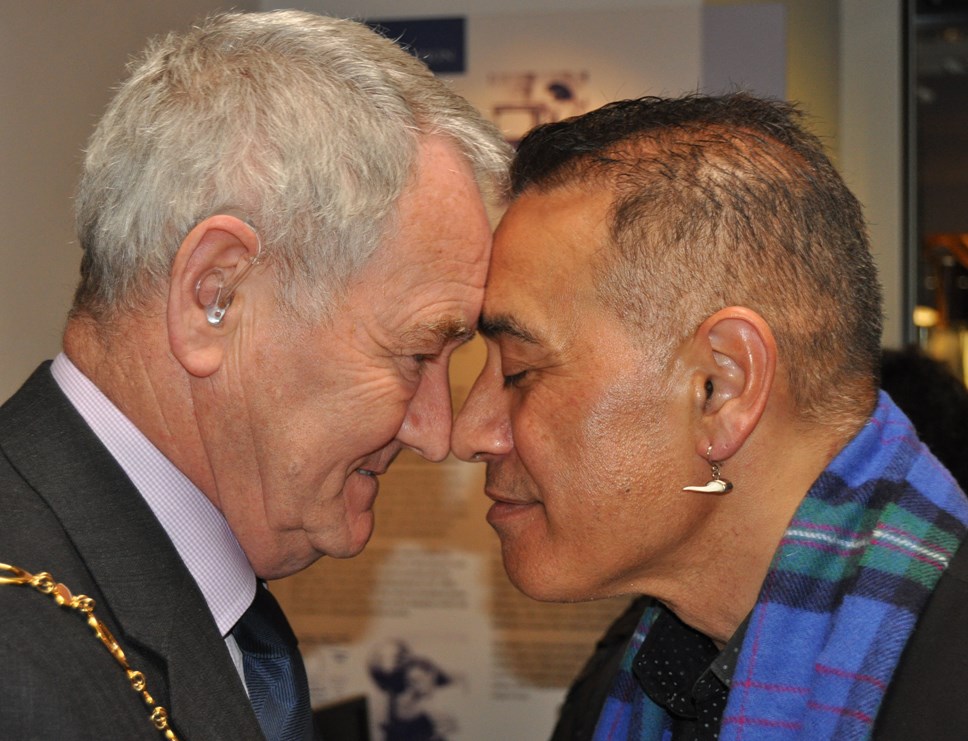
Moray museum stages Maori skull repatriation ceremony
A Maori skull which has been held as part of a museum collection in Moray for more than 130 years is to be repatriated to New Zealand.
A special ceremony took place at the Falconer Museum in Forres today at which the skull was handed over to the Museum of New Zealand to allow it to be returned to its ancestral Maori homeland.
The skull is from Waikouaita in the Otago region of New Zealand’s South Island and was donated to the museum around 1883 or 1884 by one John Hugh McKenzie, of whom very little is known.
It is not thought to have been on public display since Victorian times but instead has been carefully preserved in the museum store.
Last summer Moray Council’s museums service contacted the Museum of New Zealand after learning of a New Zealand government initiative to retrieve Maori remains from across the world and return them to their rightful final resting place.
Today the skull was returned to Museum of New Zealand representatives Te Herekiekie Herewini and Hema Temara by Moray Council convener Councillor Allan Wright who signed the formal transfer document.
Councillor Wright said: “We are pleased to be able to return these remains to the Maori people where they rightfully belong.
“It may seem strange and perhaps even macabre for any institution to be in possession of human remains from thousands of miles away on the other side of the world.
“But these things have to be seen in a historical context and in those far-off days it was the only opportunity that people had to appreciate and understand objects from other nations and other cultures.
“However, we now know of and recognise the great importance of these ancestral remains to the Maori people and we warmly welcome the delegation from the Museum of New Zealand who have come all the way to Moray to take possession of the remains and accompany them on their journey home.”
The ancestral remains of around 60 individuals are currently in the process of being repatriated to their Maori homeland, the vast majority of which are held by the Smithsonian Institute in Washington DC.
Museum of New Zealand spokesman Dr Arapata Hakiwai said: “These were dark days when these ancestors were traded, collected and stolen.
“But today we have the opportunity to put right the mistakes of the past and we are very grateful to all the institutions who have shown great sensitivity and respect to reach this milestone with us.”
Today’s ceremony included Maori singing and chanting and ended with Councillor Wright (pictured with Te Herekiekie Herewini) being invited to take part in the Maori tradition of ‘hongi’ – a form of greeting in which parties press their noses together.
Moray Council area stretches from Tomintoul in the south to the shores of the Moray Firth, from Keith in the east to Forres in the west. The council and its 4,500 employees respond to the needs of 92,500 residents in this beautiful part of Scotland, which nestles between Aberdeenshire and the Highlands.
Famous for its colony of dolphins, fabulous beaches and more malt whisky distilleries than any where else in Scotland, Moray is a thriving area and a great place to live.
Headquartered in Elgin, the administrative capital of Moray.
